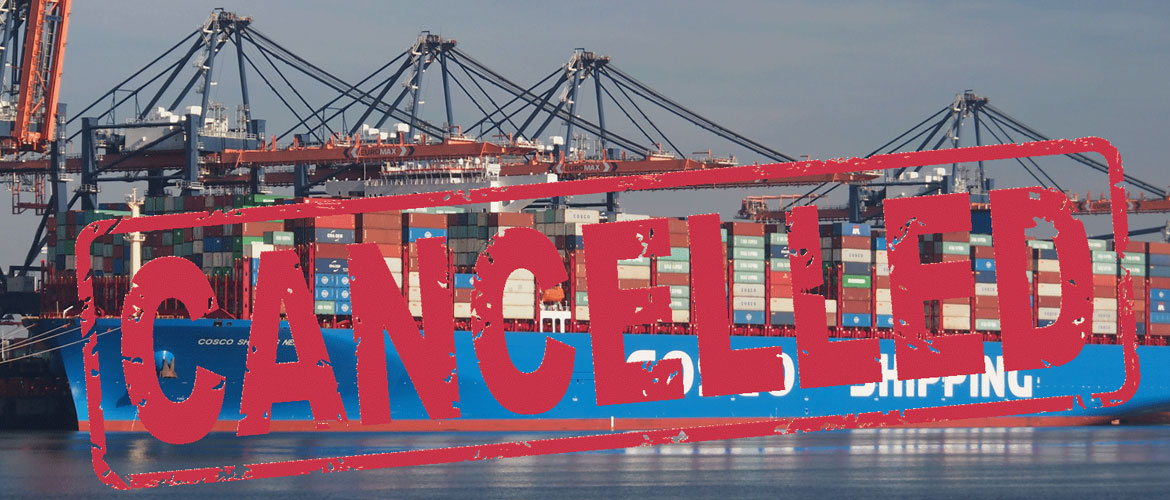Carriers have already been announcing additional blanked sailings in the weeks after the Golden Week holiday, suggesting that demand is expected to decrease in the weeks that would typically be in the peak season.
The percentage of industry-wide blanked capacity between Asia and Europe has increased significantly from the average of previous years, with Golden Week capacity reductions rising from a typical 11% to 17.0%, while in the three weeks following Golden Week, we are seeing an increase to 14%.
Though ocean volumes remain relatively strong on the Asia to Mediterranean trade, rates continue to soften and the current level is the lowest for this lane since 2019, probably due to carriers adding too much capacity when demand proved resilient, and now carriers are trying to remove capacity to match volumes.
Transpacific rates to the West Coast came down slightly in September, while prices to the East Coast remained relatively static.
Last Friday, Drewry’s Cancelled Sailings Tracker reported that across the major East-West headhaul trades: Transpacific, Transatlantic and Asia-North Europe & Med, 88 cancelled sailings have been announced between 2nd October and the 5th November, out of a total of 661 scheduled sailings, representing a 13% cancellation rate.
During this period, 52% of the blank sailings will occur in the Transpacific Eastbound, 41% on Asia-North Europe and Med, and 7% on the Transatlantic Westbound trade.
Over the next five weeks, OCEAN Alliance has announced 29 cancellations, followed by THE Alliance and 2M with 18 and 14 cancellations, respectively. During the same period, 27 blank sailings have been implemented in non-Alliance services.
Global fleet grows
At the same time, nineteen new container ships have already joined Asia to North America services (seven on the Transpacific and twelve on USEC loops), while thirteen others are now trading between Asia and Europe (nine to the Med and four to North Europe).
Over the course of the year a total of 62 neo-panamax ships (13,000 to 16,550 teu) will enter service, representing a capacity increase of 928,000 teu or 39% of all new teu slots being added to the fleet this year.
We keep our customers’ cargo moving, by ensuring there is available capacity and offering alternative service options in the event of unforeseen blankings.
We are watching the situation closely, to keep our customers informed and protect their supply chains.
Providing us with regular forecasting, helps us to understand critical dates and intended volumes, so that we can secure the right amount of capacity to keep your supply chains running.
